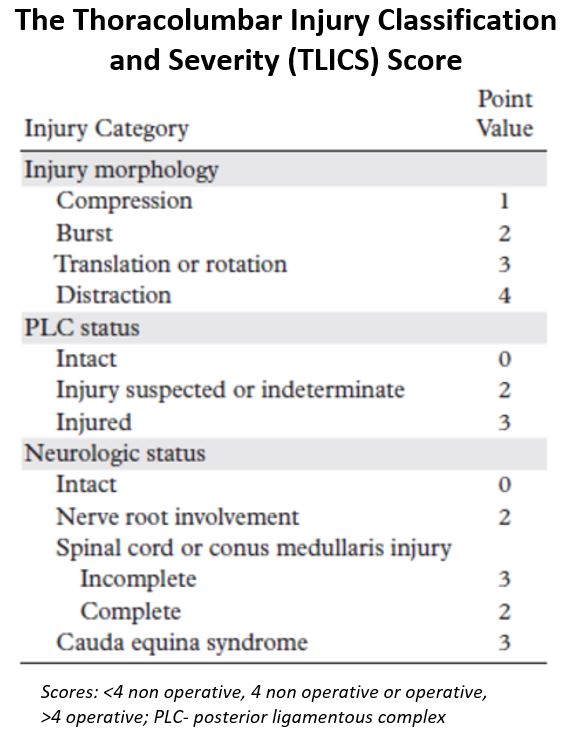[1]
Urrutia J,Besa P,Piza C, Incidental identification of vertebral compression fractures in patients over 60 years old using computed tomography scans showing the entire thoraco-lumbar spine. Archives of orthopaedic and trauma surgery. 2019 Nov
[PubMed PMID: 30900019]
[2]
Liu J,Liu Z,Luo J,Gong L,Cui Y,Song Q,Xiao PF,Zhou Y, Influence of vertebral bone mineral density on total dispersion volume of bone cement in vertebroplasty. Medicine. 2019 Mar
[PubMed PMID: 30896660]
[3]
Shi G,Feng F,Hao C,Pu J,Li B,Tang H, A case of multilevel percutaneous vertebroplasty for vertebral metastases resulting in temporary paraparesis. The Journal of international medical research. 2020 Feb
[PubMed PMID: 30880529]
Level 3 (low-level) evidence
[4]
Chen YC,Zhang L,Li EN,Ding LX,Zhang GA,Hou Y,Yuan W, Unilateral versus bilateral percutaneous vertebroplasty for osteoporotic vertebral compression fractures in elderly patients: A meta-analysis. Medicine. 2019 Feb;
[PubMed PMID: 30813133]
Level 1 (high-level) evidence
[5]
Clerk-Lamalice O,Beall DP,Ong K,Lorio MP, ISASS Policy 2018-Vertebral Augmentation: Coverage Indications, Limitations, and/or Medical Necessity. International journal of spine surgery. 2019 Jan;
[PubMed PMID: 30805279]
[6]
Maempel JF,Maempel FZ, The speedboat vertebral fracture: a hazard of holiday watersports. Scottish medical journal. 2018 Nov 14;
[PubMed PMID: 30426854]
[7]
Zarghooni K,Hopf S,Eysel P, [Management of osseous complications in multiple myeloma]. Der Internist. 2019 Jan
[PubMed PMID: 30560368]
[8]
Donnally CJ 3rd,Rivera S,Rush AJ 3rd,Bondar KJ,Boden AL,Wang MY, The 100 most influential spine fracture publications. Journal of spine surgery (Hong Kong). 2019 Mar;
[PubMed PMID: 31032444]
[9]
Savage JW,Schroeder GD,Anderson PA, Vertebroplasty and kyphoplasty for the treatment of osteoporotic vertebral compression fractures. The Journal of the American Academy of Orthopaedic Surgeons. 2014 Oct
[PubMed PMID: 25281260]
[10]
Kim HJ,Park S,Park SH,Park J,Chang BS,Lee CK,Yeom JS, Prevalence of Frailty in Patients with Osteoporotic Vertebral Compression Fracture and Its Association with Numbers of Fractures. Yonsei medical journal. 2018 Mar
[PubMed PMID: 29436202]
[11]
Expert Panels on Neurological Imaging, Interventional Radiology, and Musculoskeletal Imaging:, Shah LM, Jennings JW, Kirsch CFE, Hohenwalter EJ, Beaman FD, Cassidy RC, Johnson MM, Kendi AT, Lo SS, Reitman C, Sahgal A, Scheidt MJ, Schramm K, Wessell DE, Kransdorf MJ, Lorenz JM, Bykowski J. ACR Appropriateness Criteria(®) Management of Vertebral Compression Fractures. Journal of the American College of Radiology : JACR. 2018 Nov:15(11S):S347-S364. doi: 10.1016/j.jacr.2018.09.019. Epub
[PubMed PMID: 30392604]
[12]
Acaroğlu E,Nordin M,Randhawa K,Chou R,Côté P,Mmopelwa T,Haldeman S, The Global Spine Care Initiative: a summary of guidelines on invasive interventions for the management of persistent and disabling spinal pain in low- and middle-income communities. European spine journal : official publication of the European Spine Society, the European Spinal Deformity Society, and the European Section of the Cervical Spine Research Society. 2018 Sep;
[PubMed PMID: 29322309]
[13]
Musbahi O,Ali AM,Hassany H,Mobasheri R, Vertebral compression fractures. British journal of hospital medicine (London, England : 2005). 2018 Jan 2;
[PubMed PMID: 29315051]
[14]
Alpantaki K,Dohm M,Korovessis P,Hadjipavlou AG, Surgical options for osteoporotic vertebral compression fractures complicated with spinal deformity and neurologic deficit. Injury. 2018 Feb
[PubMed PMID: 29150315]
[15]
Bernardo WM,Anhesini M,Buzzini R,Brazilian Medical Association (AMB)., Osteoporotic vertebral compression fracture - Treatment with kyphoplasty and vertebroplasty. Revista da Associacao Medica Brasileira (1992). 2018 Mar
[PubMed PMID: 29641781]
[16]
Parreira PCS,Maher CG,Megale RZ,March L,Ferreira ML, An overview of clinical guidelines for the management of vertebral compression fracture: a systematic review. The spine journal : official journal of the North American Spine Society. 2017 Dec
[PubMed PMID: 28739478]
Level 3 (low-level) evidence
[17]
Genev IK,Tobin MK,Zaidi SP,Khan SR,Amirouche FML,Mehta AI, Spinal Compression Fracture Management: A Review of Current Treatment Strategies and Possible Future Avenues. Global spine journal. 2017 Feb;
[PubMed PMID: 28451512]
[18]
Anderson PA,Froyshteter AB,Tontz WL Jr, Meta-analysis of vertebral augmentation compared with conservative treatment for osteoporotic spinal fractures. Journal of bone and mineral research : the official journal of the American Society for Bone and Mineral Research. 2013 Feb
[PubMed PMID: 22991246]
Level 1 (high-level) evidence
[19]
Lau E,Ong K,Kurtz S,Schmier J,Edidin A, Mortality following the diagnosis of a vertebral compression fracture in the Medicare population. The Journal of bone and joint surgery. American volume. 2008 Jul
[PubMed PMID: 18594096]
[20]
Watanabe Y,Ishikawa S,Nagata H,Kojima M, Determinants Associated with Prolonged Hospital Stays for Patients Aged 65 Years or Older with a Vertebral Compression Fracture in a Rural Hospital in Japan. The Tohoku journal of experimental medicine. 2019 Jan;
[PubMed PMID: 30651405]
[21]
Crouser N,Malik AT,Jain N,Yu E,Kim J,Khan SN, Discharge to Inpatient Care Facility After Vertebroplasty/Kyphoplasty: Incidence, Risk Factors, and Postdischarge Outcomes. World neurosurgery. 2018 Oct
[PubMed PMID: 30257300]

